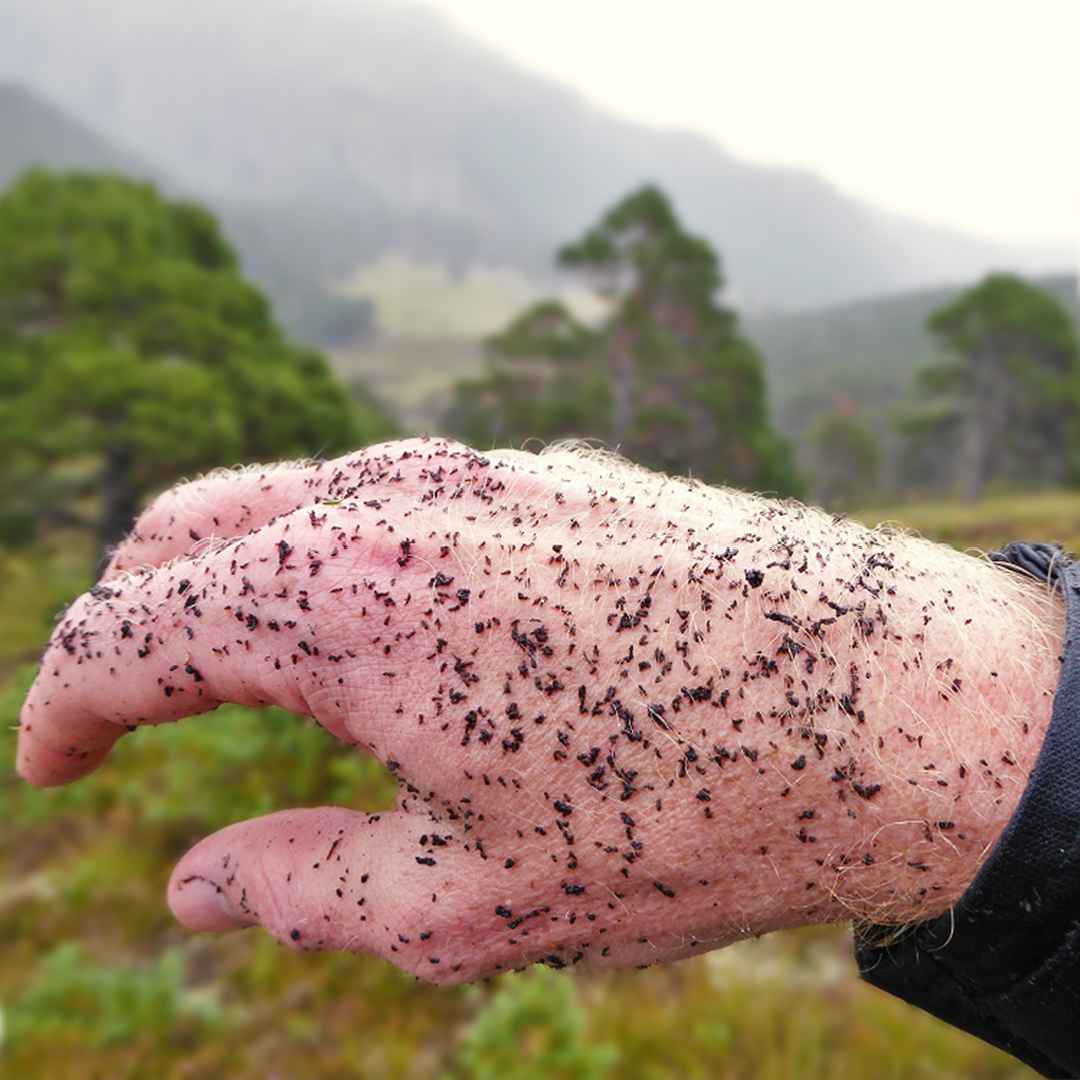Scottish midges
Ah, the Scottish midge, that minuscule yet notorious nuisance of the Highlands. These little buzzers, known scientifically as Culicoides impunctatus, are the uninvited guests of the great outdoors. They love showing up during warmer months, making your outdoor adventures a playful game of wits against their itchy bites!
The Midge Masterclass
Picture this: you’re all geared up for a delightful hike or a serene picnic, and suddenly, an invisible cloud of midges swoops in, ready to nibble on exposed skin! Their bites might not be harmful, but oh, do they itch and annoy!
In their little midge brains, dawn and dusk seem to be prime time for a feast, just when you’re admiring the glorious sunrise or sunset. They’re the tiny vampires of the insect world, seeking a quick sip of blood and leaving behind little red welts as souvenirs.
But fear not, intrepid adventurer! The locals and seasoned visitors have an arsenal of tricks to keep these cheeky critters at bay. From donning stylish head nets to wielding all sorts of repellents, there’s an art to outwitting these pesky party crashers.

what months are midges active in scotland
Midges in Scotland are typically active during the warmer months, particularly from late spring to early autumn. The peak season for midges is usually from May to September, with their activity influenced by weather conditions such as temperature, humidity, and wind.
The months of June and July are often considered the height of midge season in Scotland. During these months, especially in areas with suitable environmental conditions—such as wet and humid regions, close to water bodies or dense vegetation—midge populations tend to be most abundant.
Is a Scottish midge a mosquito?
Scottish midges, often mistaken for mosquitoes due to their size and their habit of biting humans, are actually a different type of small flying insect. They are not mosquitoes, but rather a species of tiny flying insects known scientifically as Culicoides impunctatus.
While both midges and mosquitoes belong to the broader category of biting insects, they differ in various aspects such as appearance, behavior, and habitat. Scottish midges are much smaller than mosquitoes and are known for their characteristic swarming behavior, especially in the outdoors during warmer months. They usually bite to obtain blood for egg production but do not transmit diseases to humans as mosquitoes can.
So, while midges might share a few similarities with mosquitoes, they are a distinct species of their own, with their own unique traits and behaviors.
Are midges dangerous to humans?
Midges are generally not dangerous to humans in the sense of transmitting diseases. However, their bites can be irritating and cause discomfort. When midges bite, they pierce the skin to feed on blood, leaving behind itchy welts. While the bites can be annoying and cause itching for a few days, they typically do not pose a significant health risk.
The irritation caused by midge bites can vary from person to person. Some individuals may have stronger reactions, experiencing more itching or swelling in response to the bites. In rare cases, excessive scratching of midge bites can potentially lead to infection, but this is uncommon.
Overall, while midge bites are a nuisance and can cause discomfort, they do not generally pose a serious threat to human health. They are more of an annoyance, especially when they appear in swarms, and the resulting bites can be itchy and irritating.

Midge Mastery Tips
- Dress the Part: Fashion meets function with long sleeves, trousers, and a head net – the haute couture of midge defence.
- Repel and Spray: Pick your potion from an array of midge repellents, whether natural oils or heavy-duty chemical blends. Spritz and spray your way to victory!
- Timing Tactics: Avoid their peak hours – dawn and dusk – for your outdoor activities.
- Wind Wizardry: Seek windy spots. Midges dislike a breezy day, making it an ideal time for your outdoor escapades.
- Share the Knowledge: Be a hero to fellow adventurers by spreading your midge-deflecting wisdom. Helping someone dodge midges is a noble deed indeed!
- Post-Midge Protocol: Keep anti-itch lotions or creams at hand for those stealthy midge bites that slip through.
- Dance with the Midges: Sometimes, despite your best efforts, a few might persist. So, embrace the impromptu midge-avoidance dance – flailing arms and quirky moves can deter them!
Remember, while these midges might test your patience, they’re a quirky part of the Scottish outdoor experience. With a touch of preparation and a sprinkle of humour, you can turn their buzzing presence into a playful challenge and enjoy Scotland’s outdoor marvels itch-free. Stay armed, stay covered, and above all, keep that adventurous spirit soaring!




